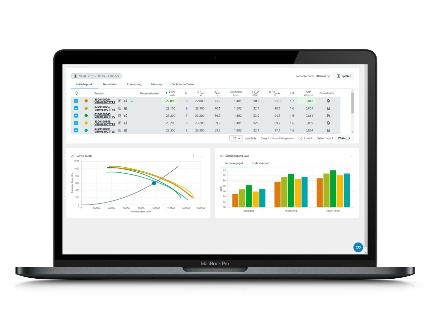
Market Overview
The HVAC Services Market is expected to register a CAGR of over 6.1% during the forecast period 2019 - 2024. Growing construction business in major emerging economies and the growing end-user markets, like data center market, etc., are major factors driving the growth of the HVAC services market, over the forecast period. Since the service firms rely extensively on labor for their operations, the existing demand and supply gap in the labor/HVAC technicians clubbed with high-cost technicians is expected to restrain the growth of the market.
Construction activity has a positive impact on not only the HVAC equipment market, but also the service market. With increased construction activity in emerging economies, the investments on infrastructure are on the rise, in order to cater to the increasing standard of living. The Asia-Pacific region tops world growth, with an expected 6.3% increase in GDP, in 2018, according to the World Bank. China, in particular, shows strong development, leading the region in terms of growth, innovation, and major investments.Moreover, both the International Monetary Fund and the World Bank predict that strong economic growth will continue in the region, until at least 2020, which will positively impact the construction sector, as the region is witnessing major investments in construction projects.
Thus, the installation and maintenance segment of the HVAC service market, is expected to benefit, due the increasing sales of HVAC equipment, through new construction projects. With regards to constructional developments globally, according to a report by Oxford Economies, construction output is forecasted to expand by 85%, to USD 15.5 trillion worldwide, in 2030, with regions like United States., China, and India accounting for 57% of the market growth.
Thus, the installation and maintenance segment of the HVAC service market, is expected to benefit, due the increasing sales of HVAC equipment, through new construction projects. With regards to constructional developments globally, according to a report by Oxford Economies, construction output is forecasted to expand by 85%, to USD 15.5 trillion worldwide, in 2030, with regions like United States., China, and India accounting for 57% of the market growth.
The Scope of the Report
The HVAC (heating, ventilation and air conditioning) services market includes the different services provided to the end users by the OEMs and other regional players. The services primarily include installation and system integration, maintenance, and repair, etc. The end users include building contractors and owners (non-residential), home owners, retail stores, food services companies, pharmaceutical, and healthcare companies, among others. The HVAC service market has a direct correlation with the HVAC equipment market.Any changes in demand for the equipment will impact the service market positively as higher demand for new equipment leads to higher installation or retrofitting services.
Key Market Trends
Residential Segment is expected to register a Significant Growth
The demand for HVAC services in the residential sector, is primarily from Asia-Pacific, owing to the growing population, across the region, thereby leading to new installations. The demand in developed regions, like North America and Europe, is mainly from the maintenance and replacement services.
In the wake of the global financial crisis and housing market collapse, an overhang of housing in many mature economies, led to a breakdown in prices of existing homes, and stifled new residential construction spending.
Direct real estate investment, and increasing wealth and prosperity in regions such as APAC, Latin America, and the Middle East, are driven by economic growth. The increasing migration to existent and newly emerging cities, in these regions, is accelerating the demand for new homes.
The robust construction of residential buildings, by the private sector, coupled with the government initiatives, to bridge emerging countries’ housing shortages, are also acting as significant factors, for the growth of the studied market.For instance, in the Philippines, the government estimated that the country’s residential sector growth could come in at an annual average of 10.3%, in real terms, from 2018-2026.
According to data from the Housing and Urban Development Coordinating Council, the country’s social housing backlog is now at 5.6 million units. There were over 30,000 residential construction permits, issued by the end of the second quarter of 2017, 24% higher than in 2016.Recently, in 2018, rising rents across Toronto led to record-breaking sales, for multi-residential apartment buildings. The sales reached USD 1.2 billion, in the third quarter of 2018.
The United States is Expected to Hold Major Share
Growing government support, in the form of higher budget allocations, designed to increase home ownership and sustainable community development, and the increasing affordability of housing, may contribute to the ever growing residential construction sector.In 2017, the US government allocated a budget of USD 46.7 billion (an increase of 1.9% over the previous year), to support residential construction. The increasing population in the country may also contribute to the rising housing demand.The boom in the construction sector is likely to contribute to the expanding of the market for HVAC and HVAC services.
The US Department of Energy (DOE) has released new efficiency standards, for commercial HVAC units, in which carbon emissions must be reduced, by up to 60 million metric tons, by 2030. According to these standards, specialized units should be manufactured, being able to provide energy-efficiency, and sustainable heating and cooling solutions.
Increased construction activities, rapid urbanization, infrastructural reforms, and HVAC unit replacements, are some of the major factors supporting the growth of HVAC services market in the country.The DOE has invested almost USD 8 million, to replace old refrigerants, with energy efficient alternatives, which can minimize environmental threats posed by rooftop HVAC units.
Competitive Landscape
The HVAC Services Market is highly competitive and consists of several major players. In terms of market share, few of the major players currently dominate the market. These major players with prominent share in the market are focusing on expanding their customer base across foreign countries. These companies are leveraging on strategic collaborative initiatives to increase their market share and increase their profitability. The companies operating in the market are also acquiring start-ups working on HVAC Services technologies to strengthen their product capabilities.In March 2018, Honeywell launched Amazon Alexa voice-ready thermostat for hotels. Honeywell’s INNCOM e7 Thermostat (e7) is the first enterprise grade environmental control and energy management solution that incorporates Amazon Alexa voice control for an effortless guest experience that includes room temperature, lighting, drapery, and amenities services.

























